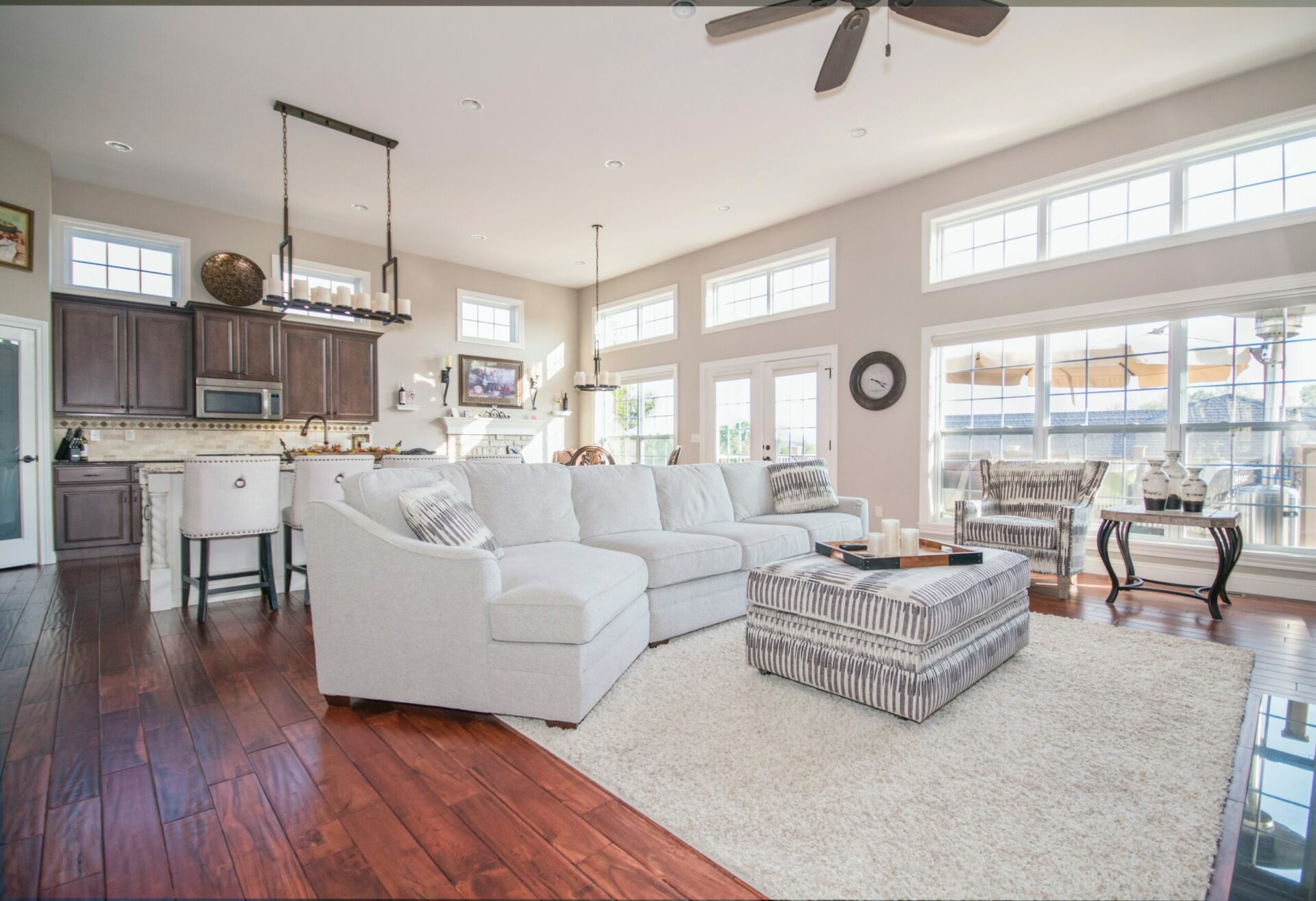Whether you’re refitting an entire house with wall-to-wall carpeting or only looking to cover up a small stretch of bare floor with a rug, it’s worth considering which materials and styles suit your needs and match the style you are going for.
Carpet and Rug Materials
Carpets and rugs are made from either natural or synthetic materials. Popular types include:
Synthetic
- Olefin – Low-cost, well-suited to damp and outdoor environments, attracts dirt contributing to a soiled appearance.
- Polyester – Available in a wide range of colors and styles, soft underfoot and stain-resistant.
- Nylon – Highly durable, ideal for high-traffic areas, and easy to clean.
- Triexta – non-moisture absorbent, softer than polyester and nylon, environmentally-friendly options available.
Natural
- Wool – Long-lasting, non-allergenic, naturally absorbs humidity in a room, weak stain resistance, and prone to moth attacks.
- Sisal – Durable and grippy with a rough texture that some may find uncomfortable barefoot.
- Seagrass – Traditional-looking, handmade, moisture-resistant, but its slippery surface makes it ill-suited to staircases.
- Coir – Affordable, coarse, but troublesome to re-fit again if moved.
- Jute – Delicate-feeling, elegant and silky-look, low durability.
Available Styles
Construction Type
The vast majority of domestic carpets are constructed using a tufting machine which uses needles to create hundreds of small loops on to a backing fabric. Less common construction types include woven, level loop, multi-level loop, velvet, Axminster, and Winston structures.
Tuft Density and Twist
Tuft density and the amount of twist in the carpet’s fiber have the most significant impact on the price, durability, and appearance. Tightly twisted fibers and densely-packed versions are more resistant to matting and crushing underfoot.
Dye
Solution-dyed fiber is colored before weaving, which increases the fade, stain, and chemical resistance. Continuous-dyed fiber is created once it has been tufted together and creates a more solid color.
Advantage and Disadvantages of Carpets and Rugs
The decision to install a carpet or rug depends upon the type of room and the homeowner’s lifestyle.
Benefits include:
- Adds warmth and reduces your energy bill by 5 to 10% per month.
- Soft, quiet underfoot, and dampens noise.
- Quick to install and a low-cost method for covering up a damaged or aging hard floor.
- Thousands of colors and styles make it easy to personalize a living space.
- Boosts the safety in your home by cushioning falls, drops, and slips.
- Converts an entire floor space into a comfortable seating, work, or play area.
Downsides to consider:
- Weekly vacuuming, stain treatment, and annual professional cleaning are required to ensure the carpet lasts its intended 5 to 25-year lifespan.
- Harbors allergens such as cat dander, mold, and dust mites, unlike tile and hard floors.
- Wall-to-wall carpeting is known to lower the resale value of your home.
- There are some restrictions on where you can install them – kitchens and bathrooms are rarely compatible with fabric and fiber products.
- Most carpet is difficult to recycle, and it’s estimated that less than 5% of carpet is recycled in the U.S.
- Unless a non-moisture absorbent material is chosen, it takes a long time for carpet or rug to dry compared to a hard floor surface – this can lead to mold in a high-humidity environment.
If you’re not sure what the right option is for you, contact us today to speak to one of our professional interior designers and receive expert guidance in your decision making process.

